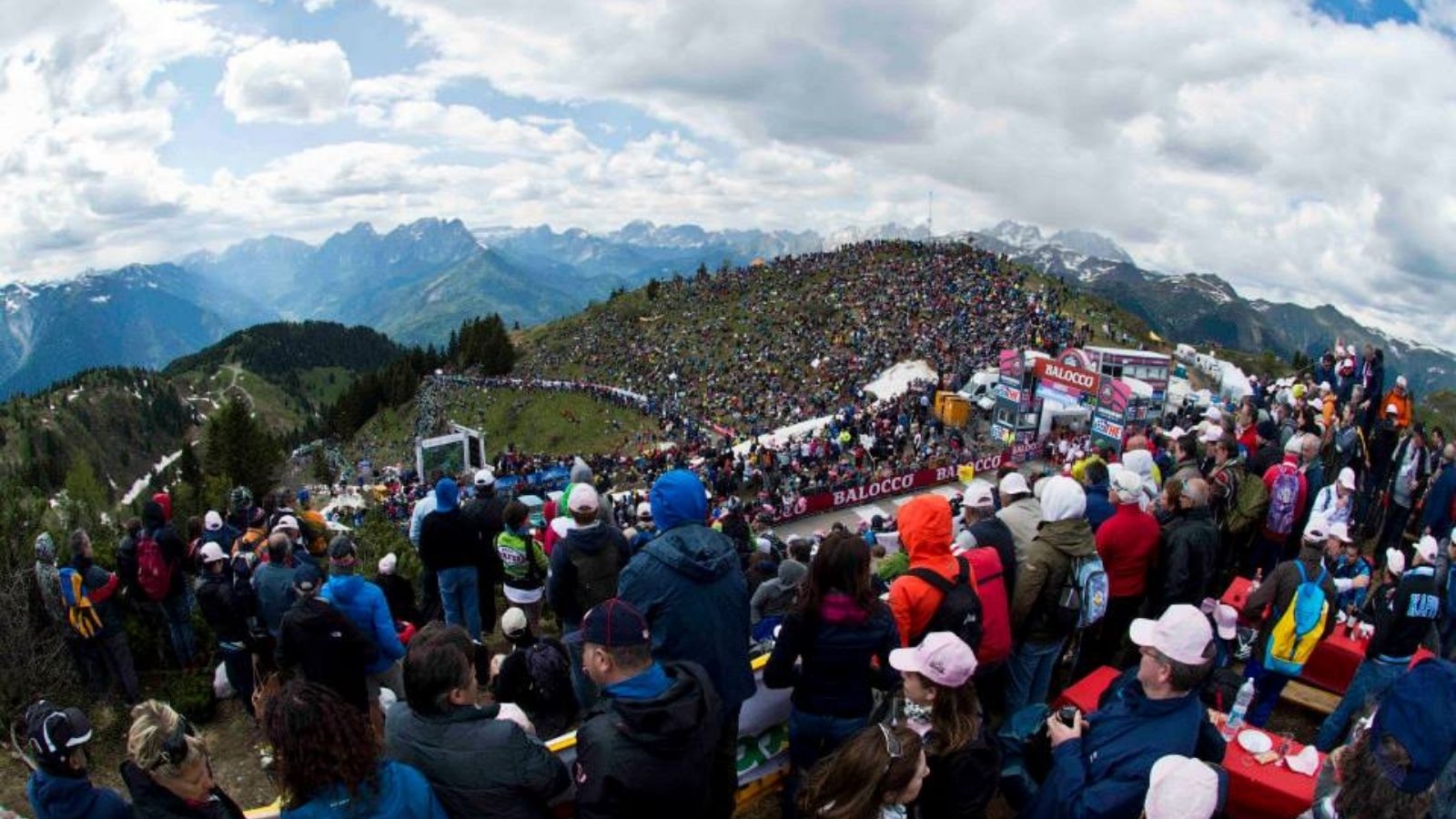Finally, the Giro d’Italia is here, again, in May, where its place is. As prepraration for one of the most important races of the year, I’ve selected 7 climbs from the program, which might be decisive for the outcome of the competition.
Montemolino
(Stage 4, Piacenza – Sestola, 187 km)

The stage includes two other 3rd category climbs, and Montemolino is neither the first, nor the last of them. So why then? Taking a look at the length of the ascent, and the steepness of the last 2 km, especially at the steepest part with 18%, this might be the first challenging climb for the GC riders. This can provide the first insight of their own, and of their rivals’ real form.
San Giacomo
(Stage 6, Grotte di Frasassi – Ascoli Piceno, 180 km)
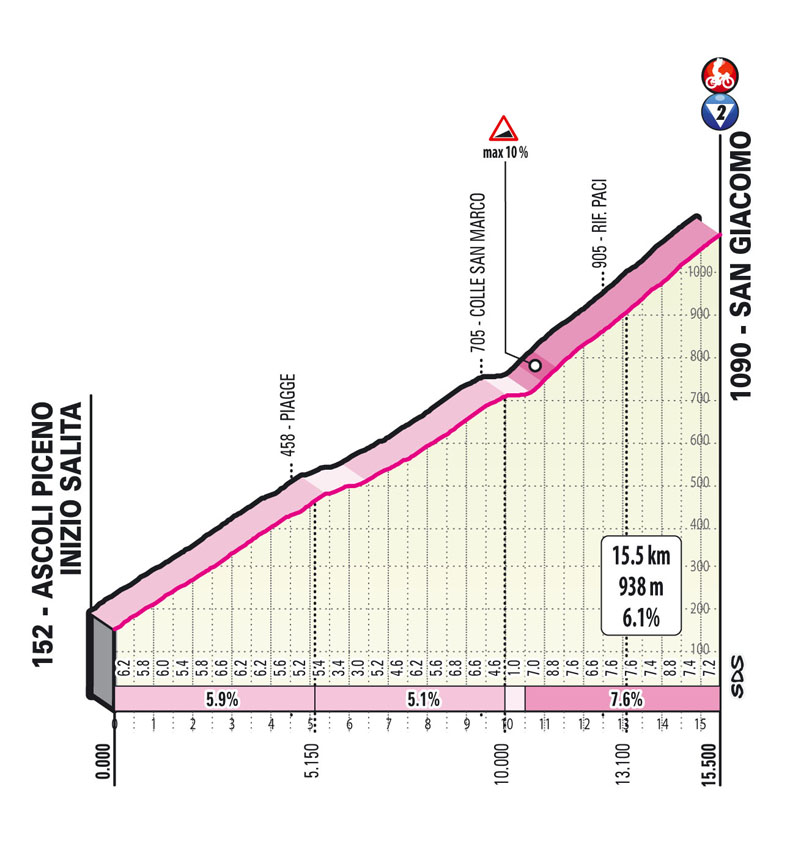
Although the final climb of the 4th stage is quite near to the finish line, the first real hilltop finish comes on the 6th stage with the ascent San Giacomo. It’s a quite long, (15,5,km), but not so steep (6,1% ) ascent, that can provide early indication of the GC rider’s form too.
Rocca di Cambio (Campo Felice)
(Stage 9, Castel di Sangro – Campo Felice, 158 km)

As ususal, the first full week ends with a mountain stage on Sunday. Although it will be possibly not one of the hardest days of this year’s Giro d’Italia, the last km of the stage can be brutal after climbing three other ascents earlier of the day. Generally, the final ascent itself doesn’t seem a hard one, but as I said, the last one km is the hardest km of the day, for sure.
s
Related post(s)
Monte Zoncolan
(Stage 14, Cittadella – Monte Zoncolan, 205 km)
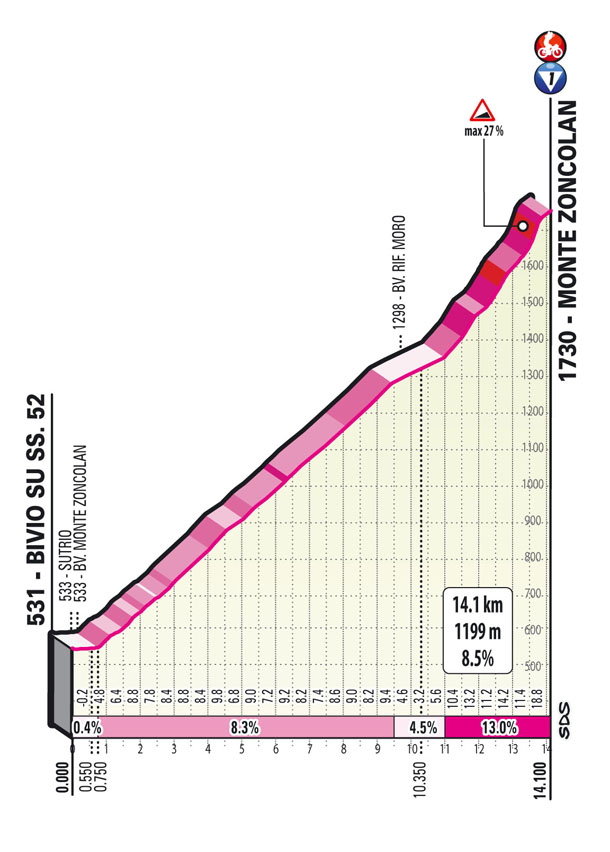
Giro d’Italia has several monster climbs, one of their is definitelly the Monte Zoncolan. Introduced to the race in 2003, this ascent became legendary immediatelly. If you have time for only one stage to watch, it should be rather this one, than others from the last week
Passo Fedaia
(Stage 16, Sacile- Cortina di Ampezzo, 212 km)
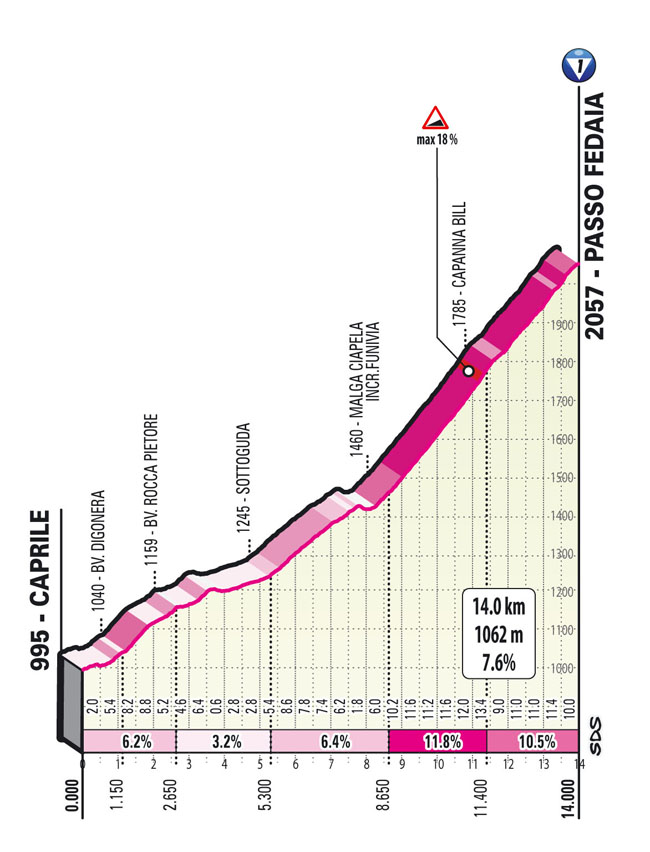
There is a new trend since a few years, not having Mondays as rest days. The riders (and the audience) can take a rest rather on Tuesdays. That mean, the second rest day will be between the 16th and the 17th stages. The 16th stage will be long (212 km) and brutal. With three horrifiing ascent.
Of course, Passo Pordoi (the penultimate climb of the day) will be the Cima Coppi (highest peak of the race) this year. But take a look at the second climb of the day, Passo Fedaia. This is a tipically game-changing place, where some of the GC riders might be surprised, that they are not in so good form, as they thought before. A dominant team with a cruel pace setting can turn the ride up to this ascent into a nightmare for other teams.
Sega di Ala
(Stage 17, Canazei- Sega di Ala, 193 km)

Oh, yes, the first mountain stage after the 2nd rest day. Plenty of riders have their own stories, what a slap into the face sometimes it can be. There are three categorized climbs in the program, Sega di Ala, ahilltop finish is the last one. Already taking a look at the stage profile makes sure, the climb is so steep, like a wall. Indeed, it’s hard and will be easier only on the last km.
Passo San Bernardino
(Stage 20, Verbania – Valle Spluga- Alpe Motta, 184 km)
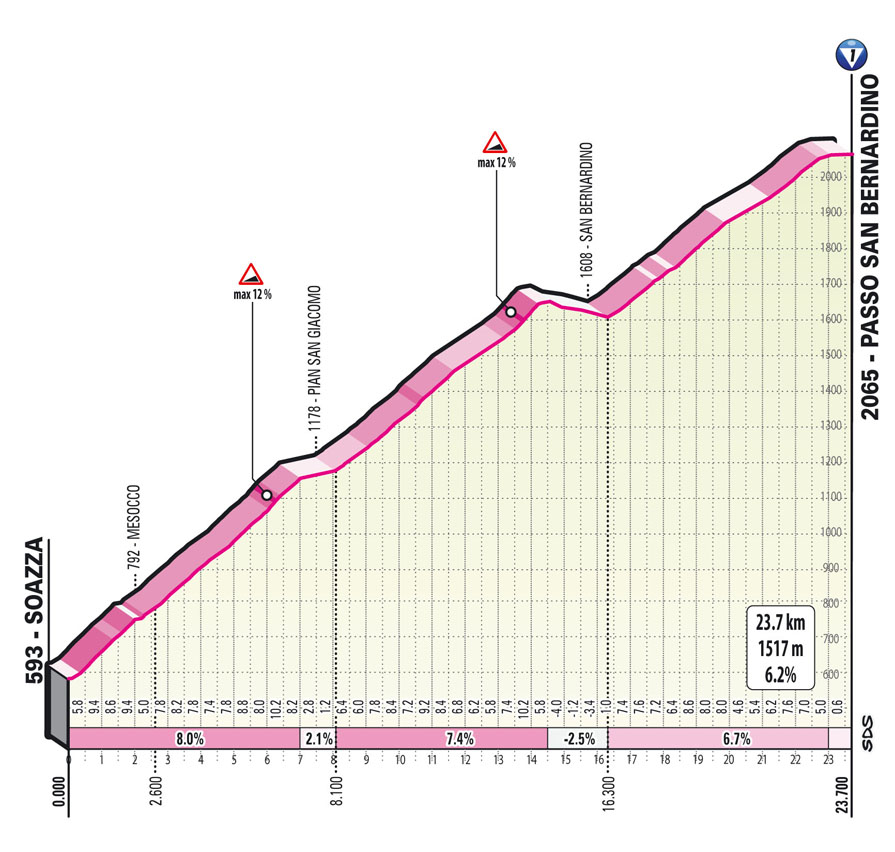
Like the Passo Fedaia a few days earlier, also the 23,7 km long Passo San Bernardino can be a real dream killer. The last one, because, as usual, the penultimate stage is the last mountan stage of the program. There will be two other ascent on this day, the very last one is a hilltop finish, but anybody, who is still going to have some hope for a great GC position (and a better climber than time trialist), has to pass this monster.
Do you like this post?
You can support the blog with 5$ (or more), just click on the Buy me a coffee button below .
Please, stay a bit longer. Choose another posts to read! .
